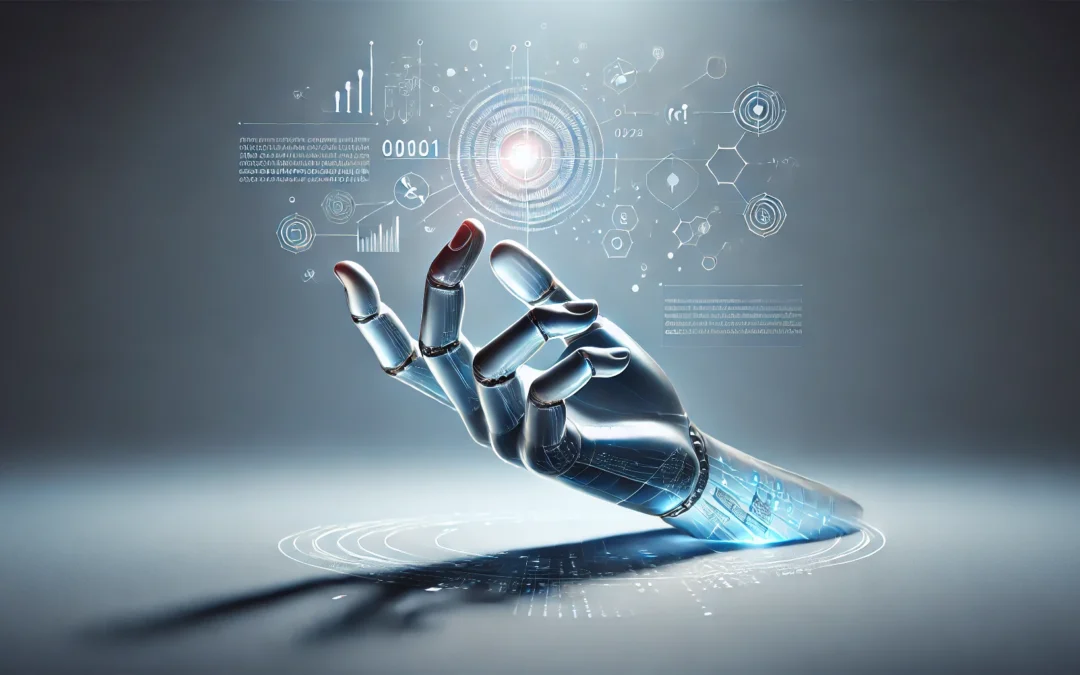Digitalization is changing the way we live and work in ways we couldn’t have imagined just a few years ago. From how we shop to how we communicate, digital tools and technologies are making things faster, easier, and more efficient. In this article, we’re going to look at 20 great examples of digitalization that are shaping our everyday lives.
These examples cover a wide range of areas, including business, healthcare, education, and entertainment. Whether it’s using apps to manage your finances, telemedicine for health check-ups, or online learning platforms to gain new skills, digitalization is everywhere. Let’s dive into these examples to see just how much our world is being transformed by digital technology.
What is Digitalization?
Digitalization is the process of using digital technologies to improve and modernize traditional business models, practices, and processes. It involves adopting tools and platforms to make operations, customer interactions, and decision-making more efficient and scalable. By embracing technologies like cloud computing, artificial intelligence (AI), big data, the Internet of Things (IoT), and advanced communication networks, businesses can boost efficiency, enhance customer experiences, and create new revenue opportunities. Digitalization is key to driving growth in today’s economy, making businesses more connected, data-driven, and adaptable.
Digitalization also plays a crucial role in improving collaboration and communication within organizations, breaking down silos, and fostering a more integrated work environment. By digitizing workflows, companies can automate repetitive tasks, streamline operations, and reduce human errors, leading to cost savings and increased productivity. Additionally, digitalization helps businesses respond faster to market changes and customer demands, offering real-time insights through data analysis.
It also enables companies to explore new business models, such as subscription services or digital marketplaces, expanding their reach to a global audience. For customers, digitalization means more personalized, convenient, and seamless experiences, whether through tailored product recommendations, faster service delivery, or 24/7 access to support.
The Best Examples of Digitalization
1. Online Banking: Banking has gone digital, allowing customers to access their accounts and manage finances online. With mobile apps, people can easily transfer money, pay bills, and monitor transactions anytime, anywhere. This eliminates the need to visit a bank branch and offers round-the-clock access to financial services.
2. E-commerce: The retail landscape has transformed with the rise of online shopping platforms like Amazon, eBay, and Shopify. Consumers can browse thousands of products, compare prices, and make purchases from around the world, all from the comfort of their homes. E-commerce also offers personalized shopping experiences through data-driven recommendations and flexible payment options.
3. Cloud Storage: Instead of relying on physical storage devices, businesses and individuals are turning to cloud services such as Google Drive, Dropbox, and Microsoft OneDrive. These platforms allow users to store, access, and share files from any location, ensuring data is always available, backed up, and secure.
4. Digital Learning Platforms: Education is no longer limited to classrooms. Digital platforms like Coursera, Udemy, and Khan Academy provide learners with access to courses on virtually any subject. These platforms cater to both casual learners and professionals seeking to upskill, offering flexibility in how and when lessons are taken.
5. Telehealth: Digitalization has revolutionized healthcare with telemedicine services like Teladoc and Amwell. Patients can consult doctors remotely via video calls, receive diagnoses, and even prescriptions without leaving their homes. This is especially valuable for those in remote areas, or those with limited mobility, making healthcare more accessible.
6. Smart Homes: Home automation is becoming a standard part of modern living. Devices like Nest thermostats, Amazon Echo, and smart security systems allow homeowners to control lighting, temperature, and security from their phones or via voice commands. These systems enhance convenience, reduce energy consumption, and offer better control over home safety.
7. Digital Marketing: Traditional advertising has evolved with the rise of digital marketing strategies. Businesses now use platforms like Google Ads, social media, and email campaigns to target specific audiences with tailored content. This precision allows for more effective customer engagement, often leading to higher conversion rates and customer loyalty.
8. Remote Work Tools: Digital platforms like Zoom, Microsoft Teams, and Slack have enabled a global shift to remote work. These tools facilitate communication, project management, and collaboration across distances, allowing teams to stay productive regardless of location. They have reshaped the modern workplace, making it more flexible and distributed.
9. Online Education: Schools and universities are increasingly offering full degree programs and courses online. Platforms like edX and OpenClassrooms enable students to learn from accredited institutions without the need to be physically present, opening up educational opportunities for people around the world.
10. Digital Payments: Digital wallets and payment platforms such as PayPal, Venmo, and Apple Pay have simplified the way we exchange money. These services allow users to send payments instantly without needing cash or cards. They also offer added security with encryption and biometric verification, making transactions safer and faster.
11. Streaming Services: Platforms like Netflix, Hulu, and Spotify have redefined entertainment consumption. Instead of purchasing or renting physical media, users can stream movies, shows, and music on-demand. This shift has given consumers greater flexibility, with personalized content recommendations and the ability to enjoy media across multiple devices.
12. Digital Signatures: The tedious process of signing paper documents has been replaced by digital signature platforms like DocuSign and Adobe Sign. These services enable legally binding electronic signatures that speed up contract processing, reduce paper waste, and provide better tracking and security for important documents.
13. Social Media: Platforms like Instagram, Facebook, and TikTok have become central to personal and business communication. They allow users to share updates, photos, and videos instantly while fostering global connections. For businesses, social media provides powerful tools for brand building and customer engagement.
14. Virtual Reality (VR): VR is transforming industries from gaming to healthcare. Devices like Oculus Rift and HTC Vive offer immersive experiences for entertainment, while industries such as medicine and engineering use VR for simulations, training, and remote collaboration, creating a new realm of possibilities in both professional and consumer applications.
15. Augmented Reality (AR): AR applications like IKEA’s AR shopping app allow users to overlay digital images onto the real world. This technology enhances user experiences by allowing consumers to visualize how products, such as furniture, will look in their homes before purchasing, or by providing interactive, location-based content in real-time.
16. Digital Twins: In manufacturing, digital twins—a virtual replica of a physical product—are used to simulate, test, and optimize products before they are physically made. This allows businesses to predict performance, identify potential issues, and reduce production costs, driving more efficient and innovative product development.
17. Smart Agriculture: Farmers are increasingly using digital tools to manage crops more efficiently. Precision agriculture technologies, such as drones and soil sensors, provide real-time data on soil health, weather patterns, and crop conditions. This data helps optimize irrigation, fertilization, and planting, ultimately increasing yields and reducing waste.
18. Digital Libraries: Libraries have expanded their reach through digital collections, providing access to vast amounts of e-books, academic journals, and research papers. Services like Google Books and JSTOR allow students, researchers, and readers to access information instantly without needing to visit a physical location, making knowledge more accessible.
19. E-Government Services: Governments worldwide are digitizing public services, from filing taxes to renewing driver’s licenses. These online services reduce paperwork, save time, and increase efficiency for citizens. Examples include platforms like the UK’s Gov.uk, where a wide range of services can be accessed and processed digitally.
20. Mobile Fitness Apps: Apps like Fitbit, MyFitnessPal, and Strava track users’ health data, such as steps, calories, and workouts. These apps provide personalized insights and progress reports, helping users stay motivated and reach their fitness goals. The data-driven approach allows for customized health plans based on individual needs and habits.
Digitization vs. Digitalization
Although the terms “digitization” and “digitalization” are often used interchangeably, they refer to different concepts. Understanding the difference between them is important, as they represent two distinct stages of the journey toward a more digital future.
Digitization is the process of converting analog information into digital form. For example, scanning a paper document to create a digital file is digitization. It’s simply about taking physical or manual data and turning it into something computers can store, process, and manage. The goal is to make this information more accessible and easier to store or share. Digitization is often the first step in a larger digital transformation but is limited to the conversion of data itself.
Digitalization, on the other hand, goes beyond just converting information. It involves using digital technologies to change how processes, systems, and operations work. Digitalization leverages the digitized data to create more efficient and effective workflows, improving how businesses operate. For example, when a company moves from paper-based invoicing to an entirely digital, automated system, that’s digitalization. It’s about transforming not just data but entire processes, often making them faster, more scalable, and more responsive to real-time changes.
In short, digitization is about creating digital data, while digitalization is about using that data to make real changes in business operations. Both are important, but digitalization is the step that leads to deeper innovation and growth.
Ethical Problems in Digitalization
As digitalization continues to permeate various aspects of life, ethical considerations become increasingly important. One of the most pressing issues is data privacy. With vast amounts of personal information being collected, stored, and analyzed, the risk of data breaches and misuse is a significant concern. Companies must adopt robust data protection measures and adhere to stringent regulations like the General Data Protection Regulation (GDPR) to safeguard user information.
Another ethical consideration is the digital divide. While digitalization offers numerous benefits, not everyone has equal access to digital technologies. This divide can exacerbate existing social and economic inequalities, leaving marginalized communities further behind. Efforts must be made to ensure that digitalization is inclusive, providing opportunities for all individuals regardless of their socioeconomic status.
Furthermore, the ethical implications of artificial intelligence and automation in decision-making processes cannot be overlooked. Bias in AI algorithms can lead to unfair treatment and discrimination, necessitating rigorous testing and ethical guidelines. As digitalization continues to evolve, it is imperative that ethical considerations remain at the forefront of technological advancements.
The Role of Cybersecurity in Digitalization
As digitalization progresses, cybersecurity becomes crucial. Protecting digital assets is essential for individuals and organizations. Cyber threats evolve rapidly, posing significant risks. Effective cybersecurity measures can mitigate these risks. Strong encryption, multi-factor authentication, and regular software updates are vital components. Additionally, employee training on recognizing phishing attacks is crucial. With increased reliance on digital systems, the importance of cybersecurity cannot be overstated. It ensures the integrity, confidentiality, and availability of data, which are paramount in today’s digital age.
However, cybersecurity is not just about technology. It also involves policies and procedures. Organizations must establish comprehensive security protocols. This includes incident response plans and regular security audits. Without these measures, digitalization efforts can be compromised. Investing in cybersecurity is not an option but a necessity. It protects against data breaches, financial losses, and reputational damage. As digitalization continues, so does the need for robust cybersecurity measures.
The Impact of Digitalization on Employment
Digitalization significantly affects employment patterns. Automation and artificial intelligence (AI) are transforming job roles. Many tasks previously performed by humans are now automated. This shift can lead to job displacement in certain sectors. However, it also creates new opportunities. Digital skills are in high demand. Positions in IT, data analysis, and digital marketing are booming. Workers must adapt to these changes by upskilling and reskilling.
Moreover, digitalization enables remote work. This flexibility benefits both employers and employees. It allows access to a global talent pool and can reduce operational costs. For employees, it offers work-life balance and eliminates commuting. Nevertheless, it also presents challenges. Remote work can blur the lines between personal and professional life. It requires reliable internet access and effective communication tools. Organizations must address these issues to ensure productivity.
In conclusion, digitalization reshapes the employment landscape. It presents both challenges and opportunities. Adapting to these changes is essential for both workers and businesses. Embracing digital skills and flexible work arrangements will be key to thriving in this new era.
Read also: Top 30 Real-Life Examples of Negotiation
The Most Popular on BitGlint

Top 100 Personal Items List
Everyone uses personal items in their daily lives, often without even thinking about them. From the moment you wake up...

30 Defiance Examples & Meaning
Defiance is something most people experience at some point in life. You feel it when you say no to something that...

Top 30 Desire Examples & Definition
Desire is a powerful force that drives much of human behavior, shaping our goals, dreams, and everyday decisions. It's...

100 Non-Digital Things List
In everyday life, there are still hundreds of objects, tools, and materials that exist completely outside the digital...

30 Examples of Attention & Definition
Have you ever noticed how a catchy tune can grab your attention, even when you're busy doing something else? It's...

60 Cultural Traditions Examples & Definition
Cultural traditions are part of daily life - whether people realize it or not. They shape what we eat, how we...

Top 30 Intimacy Examples & Meaning
Intimacy goes beyond physical touch or romantic moments. It’s about closeness, trust, and connection. In everyday...
Get Inspired with BitGlint
The Latest
40 Emotional Value Examples & Meaning
Why do some messages stick — while others are forgotten? Why do people choose one brand over another, even when the product is the same? The answer often comes down to emotional value. Emotional value is what makes a message feel human. It’s the emotional connection...

30 Teasing Examples & Definition
Teasing is a common part of human interaction. People tease in different ways, for different reasons. Sometimes it is friendly. Sometimes it can hurt feelings. Understanding what teasing means and seeing clear examples helps everyone handle these moments better....
40 Thought Experiments for Curious Minds
Some questions can’t be answered with a simple yes or no. Some problems don’t have a clear solution. That’s where thought experiments come in. They aren’t just old ideas from philosophy books. Thought experiments are tools we still use to think through problems, test...
50 Examples of Square Things
Square things are part of everyday life, even if we don’t always think about them. From objects we use at home to tools, packaging, and design elements we see out in the world, the square shape is everywhere. It’s simple, balanced, and practical — which is exactly why...

